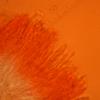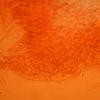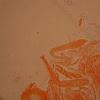
15-12-2025 07:09
 Danny Newman
Danny Newman
indet. Rutstroemiaceae sp. on unk. fallen leavesMc

15-12-2025 21:11
 Hardware Tony
Hardware Tony
Small clavate hairs, negative croziers and IKI bb

15-12-2025 15:54
 Johan Boonefaes
Johan Boonefaes
Unknown anamorph found on the ground in coastal sa

15-12-2025 15:48
 Danny Newman
Danny Newman
Melanospora cf. lagenaria on old, rotting, fallen

15-12-2025 07:05
 Danny Newman
Danny Newman
Pseudosclerococcum golindoi (det: Zotto)near Cosb

15-12-2025 11:49
 Danny Newman
Danny Newman
ITS sequences from the following two collections B

15-12-2025 12:34
 Danny Newman
Danny Newman
indet. Rhytismataceae on oak leafnear Purchase Roa

09-12-2025 12:06
 Andgelo Mombert
Andgelo Mombert
Bonjour,Je recherche l'article concernant Hypobryo
helotiaceae ?
michel hurtu,
23-02-2009 20:47
En forme de coupe ou coussinet ,sessile, 0,2 à 1 mm de diamètre,en troupe sur une petite branche de pin noir.
spores septées 10-12x2,5-3
asques 70x10
paraphyses septées 65x2,5 parfois légèrement enflées au sommet
I+ visible q'après passage dans KOH.
J'avais pensé à Phaeohelotium subcarneum , mais les spores ici sont septées.
merci de votre aide.
michel hurtu
Hans-Otto Baral,
23-02-2009 22:40

Re:helotiaceae ?
Hi Michel
that will be very difficult to resolve. First, if you tried to identify with Breitenbach & Kränzlin, that subcarneum there is Hymenoscyphus/Phaeohelotium imberbis.
Yours has a Calycina-type of apical ring and therefore should belong in the Hyaloscyphaceae. Important are the oil drops in the spores which are quite large.
It could be a Calycina. but the only one I have with 1-septate spores on conifer: "Septopezizella" oreadum, has spores with only few small LBs.
Could you please check whether the ring is hemiamyloid (red in Lugol)? And whether the asci have croziers? Further, could you make a mount in water without pressing, in order to see the living asci and especially paraphyses and their contents? Are there any short hairs on the exterior?
Zotto
that will be very difficult to resolve. First, if you tried to identify with Breitenbach & Kränzlin, that subcarneum there is Hymenoscyphus/Phaeohelotium imberbis.
Yours has a Calycina-type of apical ring and therefore should belong in the Hyaloscyphaceae. Important are the oil drops in the spores which are quite large.
It could be a Calycina. but the only one I have with 1-septate spores on conifer: "Septopezizella" oreadum, has spores with only few small LBs.
Could you please check whether the ring is hemiamyloid (red in Lugol)? And whether the asci have croziers? Further, could you make a mount in water without pressing, in order to see the living asci and especially paraphyses and their contents? Are there any short hairs on the exterior?
Zotto
Stip Helleman,
23-02-2009 23:41

Re:helotiaceae ?
Hi Michel & Zotto,
I was thinking about pseudohelotium sordidulum but there are the spores too short, croziers are present for sure, you can tell from the CR photo with 2 CR+ attachment points.
Stip
I was thinking about pseudohelotium sordidulum but there are the spores too short, croziers are present for sure, you can tell from the CR photo with 2 CR+ attachment points.
Stip
Hans-Otto Baral,
24-02-2009 00:25

Re:helotiaceae ?
yes, Stip, Pseudohelotium is a good idea. But I also can't remember a species with such short spores. Croziers +, yes, clearly!
Zotto
Zotto
michel hurtu,
24-02-2009 15:01
michel hurtu,
24-02-2009 15:07
Hans-Otto Baral,
24-02-2009 16:43

Re:helotiaceae ?
Hi Michel
fine, the asci are hemiamyloid (nicely red). The paraphyses I am not sure, look a bit like being guttulate. I am not sure that they are still alive because they lie too much over another. Perhaps you should better have slightly squashed, sorry :-(
And I have still not at all an idea about the genus, sorry. If you wish you can send it to me, but I cannot promise anything.
Zotto
fine, the asci are hemiamyloid (nicely red). The paraphyses I am not sure, look a bit like being guttulate. I am not sure that they are still alive because they lie too much over another. Perhaps you should better have slightly squashed, sorry :-(
And I have still not at all an idea about the genus, sorry. If you wish you can send it to me, but I cannot promise anything.
Zotto






